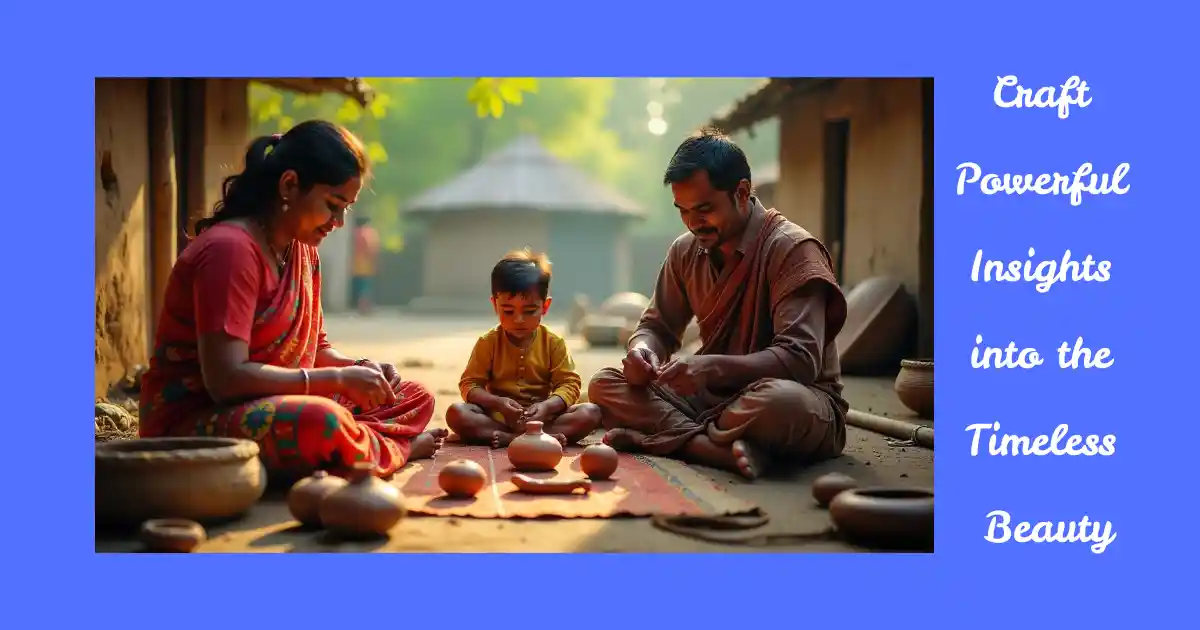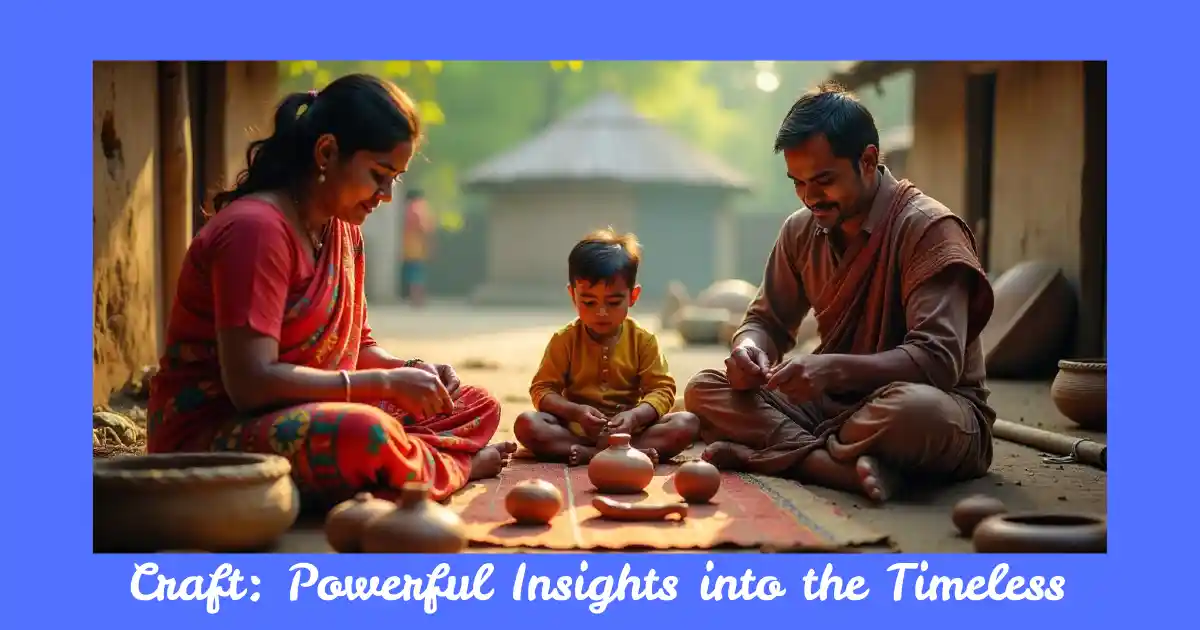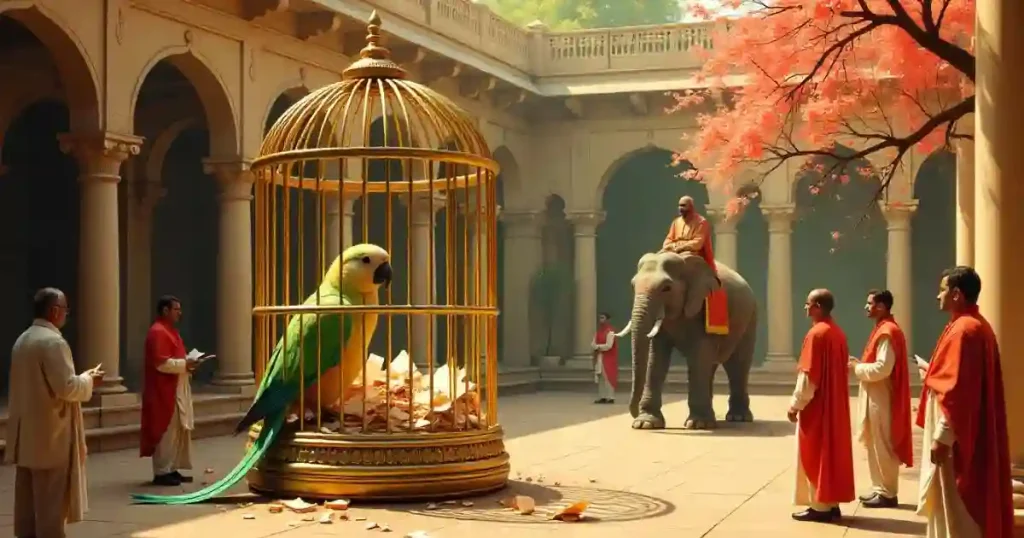Craft is more than just creating useful objects—it is an embodiment of culture, tradition, and identity. In Bangladesh, craft has grown alongside village life, giving rise to beautiful yet functional creations like pottery, jewelry, and musical instruments.

Read more – AI Classrooms: Benefits, Challenges & EdTech’s Role- U1L2
While artists are often celebrated by name, the makers of craft items remain anonymous, their works silently reflecting deep skill and personal stories. This passage explores the nature, tradition, and cultural significance of craft and handicraft in the context of Bangladesh.
Important Words and Phrases with Bangla Meaning
| Word/Phrase | Bangla Meaning |
| Intuitive | অন্তর্জ্ঞান-ভিত্তিক |
| Visionary | দূরদৃষ্টিসম্পন্ন |
| Practical application | বাস্তব প্রয়োগ |
| Everyday use | দৈনন্দিন ব্যবহার |
| Pottery | মৃৎশিল্প |
| Artisan / Crafts person | কারিগর / শিল্পী |
| On-the-job training | কাজের মধ্যেই প্রশিক্ষণ |
| Rural communities | গ্রামীণ সমাজ |
| Decorative objects | শোভাময় বস্তু |
| Handicrafts | হস্তশিল্প |
| Terracotta doll | টেরাকোটা পুতুল |
| Shatranji | শত্রঞ্জি / তুলার আসন |
| Nakshikantha | নকশিকাঁথা |
| Motifs | অলংকরণ / নকশা |
| Tactile feeling | ছোঁয়ার অনুভুতি |
| Dynamic object | চলমান ও পরিবর্তনশীল বস্তু |
| Aesthetic preferences | সৌন্দর্যবোধ সম্পর্কিত পছন্দ |
| Stable signifier | স্থায়ী প্রতীক |
| Community values | সাম্প্রদায়িক মূল্যবোধ |
Paragraph-wise Bangla Explanation
Paragraph 1
শিল্পকে যেখানে অন্তর্জ্ঞান ও সৃজনশীলতার প্রতীক মনে করা হয়, সেখানে কারুশিল্প হলো একটি ব্যবহারিক দক্ষতার প্রয়োগ, যার মাধ্যমে সুন্দর ও দৈনন্দিন ব্যবহারের উপযোগী বস্তু তৈরি করা হয়—যেমন মাটির পাত্র, কাঠ বা ধাতুর কাজ, বাঁশ ও বেতের সামগ্রী, গয়না, একতারা, ঢোল, বাঁশি ও বিভিন্ন বস্ত্র। যাঁরা এগুলো তৈরি করেন তাঁদের বলা হয় কারিগর বা শিল্পী, যাঁরা বয়োজ্যেষ্ঠ কারিগরদের কাছেই কাজ শেখেন।
Paragraph 2
বাংলাদেশের কারুশিল্পের ঐতিহ্য বহু প্রাচীন। কৃষিপ্রধান দেশ হওয়ায় গ্রামের মানুষ অনেকটাই এসব কারিগরের ওপর নির্ভর করত। শুধু দৈনন্দিন ব্যবহারের জন্য নয়, বরং বিয়ে, ধর্মীয় অনুষ্ঠান, মেলা ও বাণিজ্যের ক্ষেত্রেও এইসব হস্তশিল্প ছিল অপরিহার্য। কাজেই কারুশিল্পের পরিসর ছিল নানাবিধ—চাল ছাঁটার ঝাঁপি থেকে শুরু করে মাটির প্রদীপ, হাতপাখা, এমনকি ধাতব মুদ্রা পর্যন্ত।
Paragraph 3
চিত্রশিল্পে যেমন শিল্পীর স্বাক্ষর থাকে, তেমনটি হস্তশিল্পে দেখা যায় না। একটুকরো নকশিকাঁথা বা টেরাকোটার পুতুল দেখে সেই শিল্পীর নাম না জানলেও তাঁর মেধা ও দক্ষতার প্রতিফলন বোঝা যায়। এমনকি পরিচয়হীনতার মাঝেও এই কাজগুলো গভীর আত্মীয়তার অনুভব জাগায়।
Paragraph 4
কারুশিল্প একটি গতিশীল প্রক্রিয়া—সময়ের চাহিদা ও রুচির পরিবর্তনে এটি বদলায়। জীবনধারা ও বস্তুগত পরিস্থিতি এটির উপর প্রভাব ফেলে। তবে কিছু কিছু রূপ, নকশা, ও সৌন্দর্যবোধের ধরণ বহু যুগ ধরে অপরিবর্তিত থাকে, যা একে কোনো একটি সমাজের মূল্যবোধের স্থায়ী প্রতীক হিসেবে গড়ে তোলে।

Read more – Prepositions: Rules, Examples, and Easy Usage Guide
Craft
While art is considered intuitive and visionary, craft is seen to be a practical application of certain skills for producing objects of everyday use that are often beautiful to look at, such as pottery, metal and wood work, cane and bamboo items, jewelry, musical instruments like ektara, dhol or flute and textile items. People who practice a craft are called crafts persons or artisans who pick up their skills under the guidance of older and more experienced artisans. The training they receive is thus on-the-job, and artisans often come from the same family.
Bangladesh has a rich tradition of craft as the country has been, until very recently, dependent on agriculture, and most people lived in villages. Rural communities relied on artisans to supply them with necessary household items. But communities also needed objects to help them with social occasions such as weddings, religious rituals. festivals and personal use.
They also needed items for use in trade and commerce. Craftworks thus range from winnowing baskets to clay oil lamps, from hand held fans to metal coins. As artisans worked with their hands to produce domestic and decorative objects, these came to be known as handicrafts.
An artwork bears the signature of its creator, and the value of a painting, graphic art or sculpture depends on the stature of the artist. No such thing happens in case of craftwork. The maker of a terracotta doll or a shatranji (cotton floor mat) remains anonymous but the work retains a personal touch. When we look at a thirty year old nakshikantha we wonder at its motifs and designs that point to the artistic talent of its maker.
The fact that we don’t know her name or any other details about her doesn’t take anything away from our appreciation of the maker’s skill. Indeed, the intimate nature of the kantha and the tactile feeling it generates animate the work and make it very inviting.
A craftwork is a dynamic object-always evolving and always abreast of changing tastes and needs. Changes in lifestyle and material conditions have an impact on craftworks and their production. But certain forms, motifs, styles and aesthetic preferences change little over time, suggesting that a craftwork can function as a stable signifier of community values and preferences over time.
[This passage/content is taken from the National Curriculum and Textbook Board (NCTB), Bangladesh English textbook for educational purposes only.]
© NCTB Bangladesh. All rights reserved to the original publisher.
Related Historical or Cultural Context
- বাংলাদেশের প্রাচীন লোকশিল্পের ইতিহাস মিশে আছে কৃষিভিত্তিক সমাজে।
- ব্রিটিশ আমলে এবং তার আগেও বাংলার হস্তশিল্প (যেমন মসলিন ও টেরাকোটা) বিশ্ববিখ্যাত ছিল।
- নকশিকাঁথা ও শত্রঞ্জি বাংলাদেশের লোকজ ঐতিহ্যের নিদর্শন, যা গ্রামীণ নারীদের দক্ষতা ও সৃজনশীলতাকে তুলে ধরে।

Literary Terms in Craft and Their Explanation
| Literary Term | Explanation with Example |
| Imagery | The use of vivid descriptions to appeal to the senses. Example: “the tactile feeling it generates animate the work…” evokes the sense of touch. |
| Symbolism | Craftwork is used as a symbol of tradition and communal values. |
| Contrast | A contrast is drawn between named artists and anonymous craftspersons. |
| Personification | The line “animate the work” gives life-like qualities to inanimate objects. |
10 Short Questions to
- What is the main difference between art and craft?
- What types of items are created through craft?
- Who are called artisans or crafts persons?
- How do artisans usually learn their skills?
- Why did rural communities in Bangladesh depend on artisans?
- What are some examples of craftworks mentioned in the passage?
- Why do most craftworks not bear the names of their creators?
- What does a nakshikantha reflect about its maker?
- How does lifestyle change affect craftwork?
- What does the unchanging nature of some craft motifs signify?

